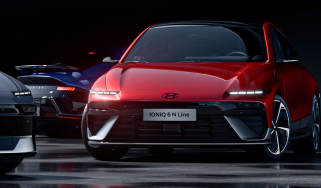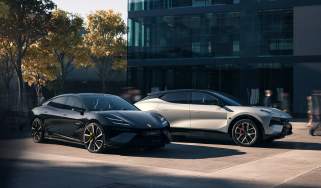All-new Mini Cooper: reborn icon launches with SE electric hot hatch
The Mini as we know it has been reinvented for the electric age, headed by a 215bhp Cooper SE version
As Mini steps into a new era of electric cars, the brand is undergoing its biggest transformation since BMW took charge and relaunched it at the turn of the millennium. Meet the new Mini Cooper: initially launching as an EV, the fifth-generation hatch adopts new underpinnings, more advanced tech and a fresh design direction to face off against other electric superminis like the Fiat 500e and forthcoming Renault 5.
In a departure from the outgoing version, the ‘Cooper’ badge denotes the primary model name for the new Mini hatch, rather than a trim level. Launching in two guises to begin with – the Cooper E and Cooper SE hot hatch – the new EV rides on a bespoke platform jointly developed by BMW and Chinese firm Great Wall (the ICE Mini will live on using its own architecture when it arrives later). Both electric versions use a single front motor, with the Cooper E generating 181bhp and 214lb ft and reaching 62mph from standstill in 7.3sec. The Cooper SE shaves 0.6sec from that thanks to a more powerful motor with 215bhp and 243lb ft. Flat out, the Cooper E hits 99mph, with the SE topping out at 106mph.
Achieving 250 miles from a full charge, the SE offers an extra 60 miles of range over the Cooper E, with the higher energy demands of its electric motor necessitating a 54.2kWh battery pack in place of the base car’s 40.7kWh unit. Both models offer a peak charging rate of 95kW, enabling a 10 to 80 per cent top up in about half an hour.
Mini promises that both Coopers will capture the hyper alert, playful dynamic character that has defined the model over the decades. With an increased track width, a longer wheelbase and a lower centre of gravity than before, it should offer a more surefooted feel, and Mini has included a strut brace to stiffen the Cooper's structure and preloaded anti-roll bar mounts on both axles for tauter handling.
As ever, the Mini's driving experience will be configurable through software, with different settings for steering weight, powertrain response and traction control intervention. There's also an artificial sound generator to bring some life to the Cooper's power delivery, although unlike the obnoxious exterior speaker system fitted to the new Abarth 500e, these driving sounds aren't projected outside.
The Mini's new look will be shared across electric and petrol-powered versions, despite their different platforms. Stubby overhangs, a ‘floating’ roof design and rounded surfacing are among the classic Mini cues carried over in the latest model, but the rear end is a radical departure from its forebears with triangular tail lights designed to evoke the Union Jack. Of course, many design details are driven by aero efficiency to eke out maximum range, with flush-fitting door handles and a closed front grille being two obvious examples.
Inside, the Mini's usual retro themes – namely the circular central display cluster and tactile toggle switches – have been applied in what is a far more advanced cabin than before. The infotainment system centres around a large, round OLED display mounted to the dash – measuring 24cm in diameter, it runs Mini's new Operating System 9 software and splits driving information and general infotainment functions between the top and bottom of the display. Thankfully, the climate controls are a permanent fixture on the screen for easy access on the move.
As part of the optional Connected Package, users can install media streaming and gaming services through Mini's app store, and typical of the brand, personalisation is at the forefront of the interior design. From the ambient lighting and infotainment colour scheme to the textile finishes on the dashboard, owners can tailor the Mini's cabin to their tastes, and it's available with a host of equipment you might expect to find in cars from one or two classes above such as a smartphone-based digital key and a 360-degree parking camera.
The first new Minis will reach customers in spring next year, with the entry-level Cooper E costing from £30,000 and the SE priced at £34,500 – about the same as an Abarth 500e. Further on in the new Mini's lifecycle, you can expect a flagship JCW EV hot hatch to join the fray with a power uplift over the Cooper SE. In 2020, the firm announced that ‘future Mini vehicle architectures will allow the extreme performance of the John Cooper Works brand to be experienced with electric powertrains as well as combustion engines’.
While all EV variants will be built in China, the petrol-powered Mini will continue to be produced at BMW’s Oxford plant when it arrives later. Expect the current Mini’s 1.5-litre three-cylinder engine to feature once more, albeit with performance and efficiency advancements to bring it up to date.









